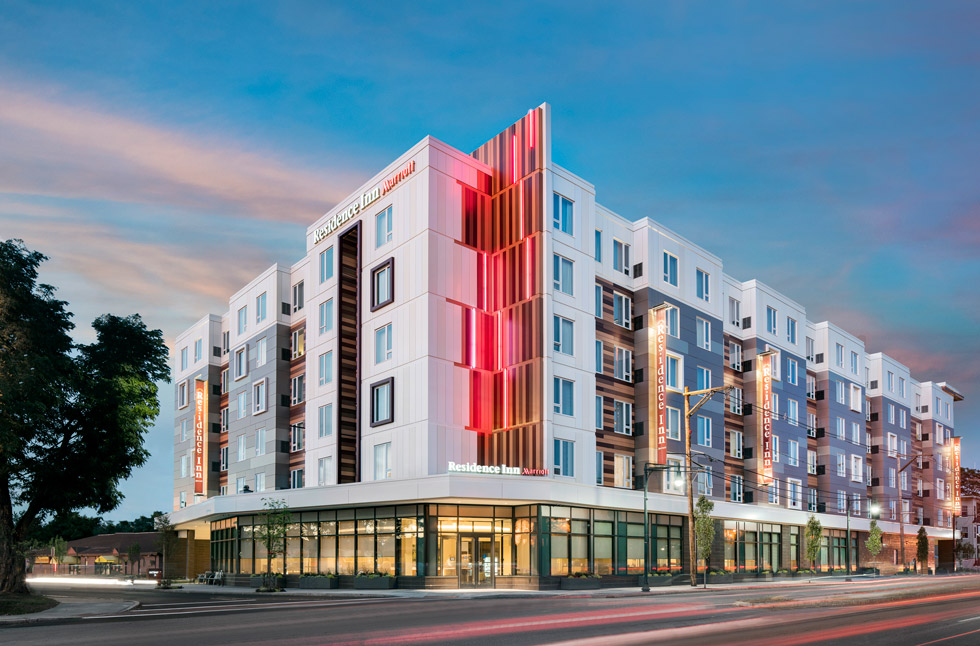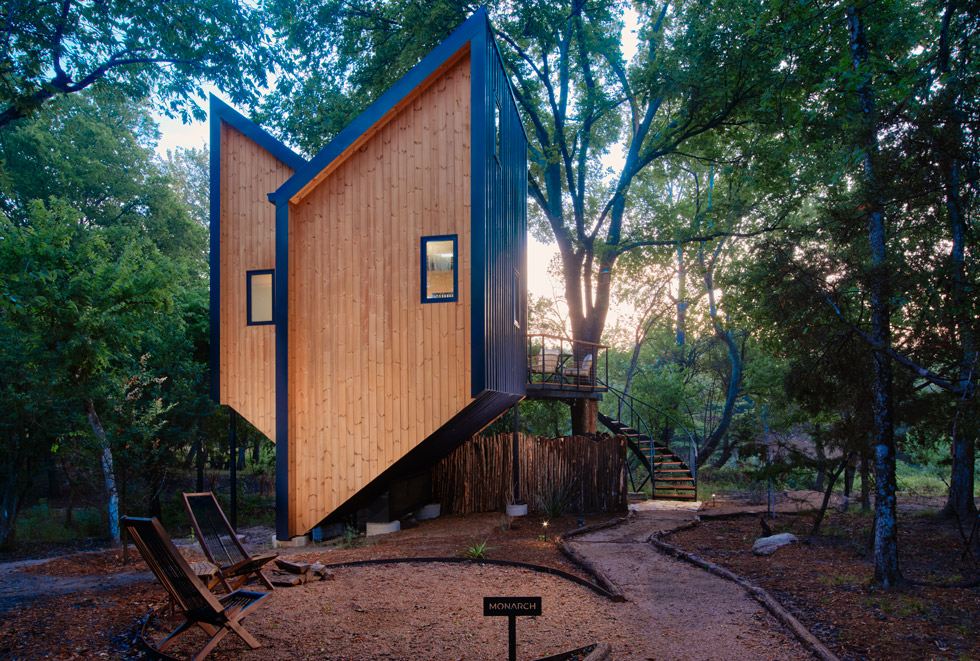From its early concentration on select service assets to a recent entry into glamping, Summit Hotel Properties, Inc. (NYSE: INN) has focused on understanding and staying ahead of evolving consumer preferences. It’s an approach that CEO Jon Stanner believes is essential to building a REIT that aims to deliver best-in-class returns.
Austin, Texas-based Summit owns, either wholly or through joint ventures, 103 properties mainly across the Sun Belt and in mountain towns including Steamboat Springs, Colorado.
Stanner, who became CEO in 2021 after previously serving as CFO and treasurer, joined the REIT in 2017 from Strategic Hotels & Resorts, Inc. He says what intrigued him about Summit was that it had been “a real success story” from when it went public in 2011, and attributes that to its focus on assets with efficient operating models before they found favor more broadly among institutional investors.
“The core philosophy of the business hasn't changed. We're still a believer that owning and operating intensively these types of assets provides the best risk-adjusted returns in the market,” Stanner says. He notes that Summit recognized early on that guest preferences were evolving in a way that was particularly beneficial to select service assets.
That attention to monitoring market patterns is a mainstay of the business. “We're students of how guest preferences, travel patterns, and consumer preferences in general are changing. We always want to make sure we change and evolve our portfolio in lockstep with that. Hence why we've been so transaction-oriented over the last several years,” Stanner says.
Staying Active
Since 2017, Summit has acquired 55 assets for about $2 billion and sold 33 assets for about $500 million. During that time, it has also established a joint venture with Singapore’s sovereign wealth fund GIC, which Stanner describes as “arguably the best institutional capital partner in the commercial real estate space.”
Stanner says Summit had been looking for the right joint venture partner for several years. “What was really important to us was to find a capital partner that was aligned with how we thought about creating value,” he says.
The joint venture contains over $1 billion in assets. Stanner explains that it was established in July 2019 when Summit’s cost of capital wasn't conducive to external growth. The joint venture allowed Summit to continue to be acquisitive, “something that we feel is important to the value creation proposition of Summit.”
Having a vehicle that allows Summit to put less equity into any deal and also creates a fee stream, which enhances returns, “is very important to us,” Stanner says.
Michael Bellisario, senior research analyst at Baird, describes the GIC joint venture as “transformative…over the long run Summit should be able to leverage that partnership and do different types of deals than their public and private peers.”
Other major milestones for Summit include the acquisition of the NewcrestImage 27-hotel portfolio in January 2022. Chris Woronka, senior research analyst at Deutsche Bank Securities, says Summit is well-positioned after the acquisition, “and the incremental capital expenditure requirements are pretty minimal.”
The NewcrestImage deal, combined with the sale of legacy, smaller, lower RevPAR, lower margin, tertiary market assets has resulted in what Stanner describes as “the highest quality select service portfolio in the public space.”
“We've been incredibly active. We're a believer that you need to transact in this business given how dynamic it is, both at the market level and at the consumer level,” Stanner says.
Woronka agrees, noting that if there are transactions that make sense for Summit, “I certainly think they have the ability, willingness, and desire to remain active.”
Bellisario notes that after all the “heavy lifting” Summit did last year on the operational side, with joint ventures and investments, “it now needs to show up in the numbers…that will dictate the perception of success this year as all those investments start to pay off.”
Active Allocators
Stanner says the pandemic had “pretty wide ranging” effects on the business and some of what Summit has done recently reflects how it thinks changes in the industry have either been accelerated or maybe altered because of it.
“We've felt strongly that there is a better growth profile in leisure assets in Sun Belt markets and some of that has been accelerated by the pandemic. If you look at the acquisitions we've done over the last two years, they've all either been in mountain towns or they've been in the Sun Belt,” Stanner says.
Summit spends an “enormous amount” of time trying to be thoughtful around capital allocation, given the dynamics of the marketplace, Stanner says. That mindset, coupled with a best-in-class operating platform, means that “over time, we're going to have built a company that's poised to deliver best in class returns.”
Summit has invested over $300 million since 2017 to renovate assets and position them in a way that “we think really speaks to this next generation of traveler,” Stanner says. He points out that there are very few prototypical hotels in the portfolio, so most of the renovation work is custom.
“We want our hotels to have a sense of belonging, a sense of location, a sense of place. We think it elevates the experience to a point where it allows us to drive better rates and achieve better overall returns,” he says.
Recently, Summit took a new turn in anticipation of the next generation of traveler when it entered the niche glamping market through a partnership with Onera Escapes. Summit acquired a 90% joint venture interest in the Onera Fredericksburg, an 11-unit premium luxury camping asset in Fredericksburg, Texas, for $4.5 million.
“Glamping is a really perfect fit in terms of how we see guest preferences evolving. It’s a more experiential type of accommodation. It’s outdoors, eco-friendly, and something that's conducive to posting on social media,” Stanner says. While the trend mainly appeals to a younger demographic, he says Summit is seeing broader interest in the product.
Woronka at Deutsche Bank sees the venture as a positive development. “It shows that they are responding to what appears to be part of the new lodging landscape,” he says.
Longer-Term Shift
As Stanner looks across the lodging industry today, he says its recovery, in any type of historical context, has been “pretty remarkable. This was an industry that lost half of its revenue in 2020.”
One of the lingering effects of both the pandemic and the current dislocation in credit markets, according to Stanner, is a lack of new supply. “I think we'll run with roughly half the supply growth over the next three, four, or five years than we've run on a historical basis,” he says.
Stanner points to tremendous pricing power in Summit’s business, despite demand segments that have lagged—business travel and international travel most notably. “The recovery has been led by incredibly strong leisure travel,” he says. Summit’s weekend business in 2022 easily exceeded where it was in 2019, Stanner says. Even shoulder nights were at or even slightly above 2019 levels.
The opportunity for growth, Stanner says, has really been in the return of midweek business travel, particularly in urban markets where 50% of Summit’s assets are located.
“We started to see a fairly meaningful improvement in business travel post-Labor Day last year. That's really continued through the first quarter of this year. We're very encouraged by the signs that we're seeing, although it is market specific,” he says. “Chicago, Pittsburgh, and Charlotte, North Carolina, for instance, have all seen tremendous progress, albeit off of a much lower base.”
While the bar for business, group, and international travel is lower than on the leisure side, “we do think there is this longer-term shift where travel generally is going to continue to steal wallet share from consumers. We think the industry overall is very well positioned for where consumer preference and consumer spending patterns are going,” Stanner says.
Challenges over the last 12 to 18 months have included managing rising costs, particularly labor costs, Stanner points out.
“The short and the medium-term outlook for our industry is heavily dominated by this kind of macroeconomic uncertainty. However, I do think the longer-term outlook for this business is remarkable. I am really bullish about our ability to create not just shareholder value, but outsized shareholder value over time,” he says.


